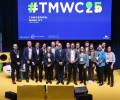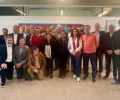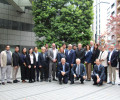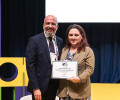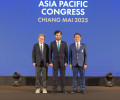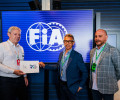Strategic Direction: World Council For Automobile Mobility And Tourism Meets For The First Time In 2025
Members of the World Council for Automobile Mobility and Tourism gathered for the first time in 2025 in Macau to discuss FIA Mobility’s strategic direction, celebrate recent achievements, and align around a renewed approach designed to connect local relevance with global impact and ensure that the realities faced by FIA Clubs on the ground not only inform, but shape, the international mobility agenda.
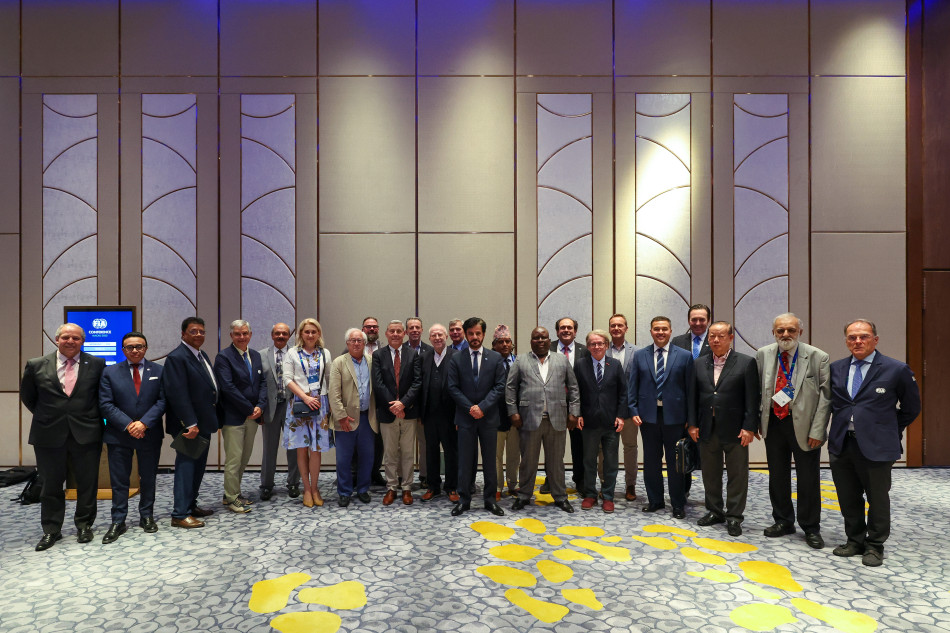
Hosted on the occasion of the 2025 FIA Conference at the Galaxy Macau, the meeting aimed to set the course for the months ahead.
FIA President Mohammed Ben Sulayem welcomed members by paying tribute to the host Club of the Conference, the Automobile General Association Macao-China (AAMC).
“I would like to thank our host, the Automobile General Association Macao-China, for the warm welcome we have all received and for showing us first-hand the innovative work taking place in the mobility space here,”he said.
Reflecting on the achievements of the past years, he emphasised the importance of keeping Clubs at the heart of the FIA’s mission.
“I am pleased to reflect on the progress we are making together toward a safer, smarter, and more sustainable future for global mobility. Success is not only happening at the global level. We are seeing real change through local deployment led by our Clubs, bringing life-saving initiatives to even more communities every day. We are also supporting Clubs through innovation. We shape our priorities based on your needs,”he added.
Complementing that, FIA Deputy President for Automobile Mobility and Tourism Tim Shearman underlined the importance of continuing to elevate the role of Clubs in road safety and broader mobility impact.
“I want to thank the President for leading an extremely strong turnaround for the FIA - both in terms of finances and the application of the Manifesto. The President mentioned some of the key road safety initiatives that have been so successful. We really have to make sure we continue to promote road safety, because that’s what sets us apart from any other international federation. It’s incredibly important for our Clubs, our brands, and for the FIA itself. A great example is the recent International Transport Forum in Leipzig, where the FIA Road Safety Index was referenced in the Policy Recommendation of the ITF’s Council of Ministers,” he said.
The cornerstone of the meeting was the presentation of FIA Mobility’s renewed strategic approach by FIA Secretary General for Automobile Mobility Willem Groenewald. Articulated around four key pillars – acting as a global voice for safe and sustainable mobility, fostering knowledge and experience sharing, supporting Club and regional growth, and driving strategy with Member insights – the approach aims to reinforce the FIA’s ability to act globally while delivering locally.
The strategy approach emphasises deeper collaboration to bridge the gaps, with the aim to bring together the FIA, Member Clubs, government bodies, institutions, and the private sector to co-create solutions for the future of mobility. It will rely on the scaling up of research and knowledge-building, so the FIA Mobility can better understand mobility trends, anticipate challenges, and support its Members with actionable data and tools.
Sustainability will also be a core dimension of this work. As Willem noted, in mobility, the concept extends beyond looking at fuels and power units, it is about driving wider climate action through solutions to improve how people move around, and address challenges such as congestion and urbanisation. The FIA will also strengthen its focus on smart cities and sustainable urban mobility as key areas of impact.
Throughout the session, members reviewed progress across the FIA Mobility portfolio. The FIA Road Safety Index continues to gain momentum, with Vodafone Greece and UTSCH in Germany having just received the highest 3-star rating. In addition to the ITF reference, New York City’s Department of Citywide Administrative Services (DCAS) has now committed to adopting the Index. Through the support of Member Clubs, the Index is also expanding its reach as they serve as a strong engagement network to engage the private sector in the fight for safer roads, everywhere.
An update was also shared on the Safe Mobility 4 All and Safe Mobility 4 Life initiative. With 13 Clubs engaged across FIA Regions III and IV, and deployment underway in Region II, the programmes exemplify the strategy’s emphasis on capacity building, practical implementation and regional adaptability to drive stronger impact.
Innovation was also a key topic, with the 2025 edition of the FIA Innovation Challenge having received applications from 43 Club-led projects across the four Mobility Regions. Following the announcement of FIA Region I champions, the Challenge will continue with recognitions of the other regional champions at the upcoming FIA American and Asia-Pacific Congresses. At these events, the Challenge will continue to celebrate Club initiatives that create real value and foster a culture of creativity, agility, and collaboration within the FIA community.
In line with the strategic objective of empowering Member Clubs, the World Council members heard an update on the FIA University, which has opened registrations for its two global programmes, the Advanced Leadership Programme and the Senior Executives Programme in partnership with Columbia Business School Executive Education.
FIA Sustainability and D&I Director Sara Mariani presented an update on the development of the new FIA Sustainability Strategy, which will build on the successes of the first 2020–2025 strategy. The new framework aims to broaden the scope and drive even greater impact across both sport and mobility, aligning with the Federation’s long-term ambitions to contribute to building a greener future.
Chief Development Officer Habib Turki highlighted the work of the young Strategic Development Department. He presented the Department’s 4A Advocacy Model relying on awareness, acknowledgment, acceptance, and activation, designed to support Clubs in expanding their influence and operations. One example of this model in action is the FIA’s ongoing work in China, where the Federation is supporting local efforts to strengthen business development, reinforce its Member Clubs’ leadership in the country and expand tourism services. Initiatives include targeted capacity building, lobbying on the adoption of international travel documents, and enhanced international cooperation.
Habib also updated the World Council on tourism service developments, including the FIA’s collaboration with UNECE WP.1 on proposed updates to the 1968 Vienna Convention on Road Traffic.
The next meeting of the World Council for Automobile Mobility and Tourism will take place during the FIA General Assembly week in Tashkent, Uzbekistan, in December.

 Facebook
Facebook Twitter
Twitter